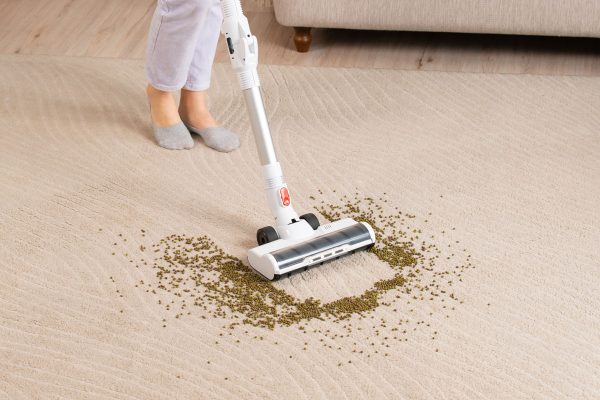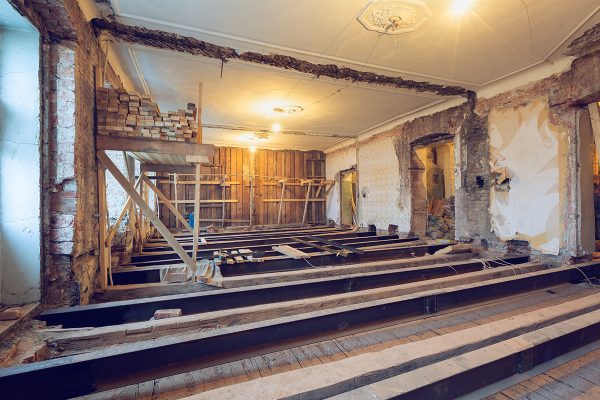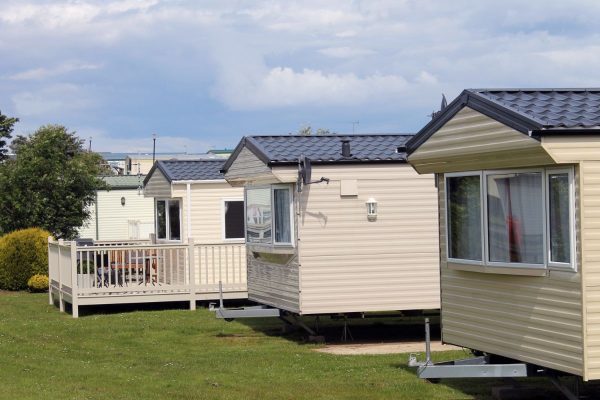Deck and subfloor surfaces have different purposes. But can you use deck screws for a subfloor? Why and when do you need screws for the subfloor? Keep calm! We did comprehensive research to answer these questions.
Yes, deck screws are good to use on the subfloor. You just need to find the right type and size of screws. Also, it's important to know how to screw the subfloor properly. As an example, see below the steps for screwing a plywood subfloor:
- Suppose you cut the plywood to the right size and lay it down on the floor joist.
- Mark the screws' spots every six inches along the edges using a pencil. Ensure that the screws will hit a joist.
- Use a screw gun to pierce the screws through the joists.
Throughout this article, we'll learn why and when you can use deck screws for the subfloor. Then we'll go deeper into discussing related flooring issues. Let's keep reading!
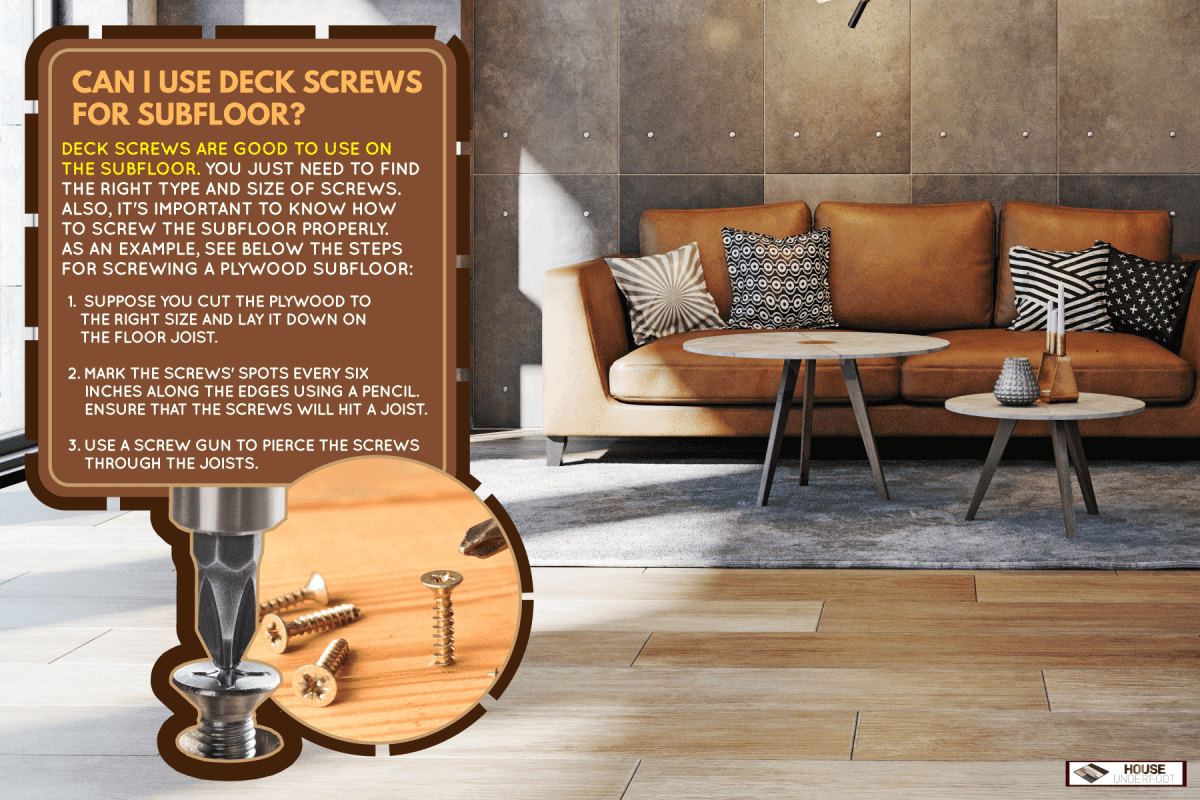
Can Deck Screws Be Used for the Subfloor?
A deck is a type of flooring outside the house that's typically made from wooden planks. You need screws to attach wooden planks together to support each other and make a sturdy deck.
On the other hand, a subfloor is a layer on top of the floor joist. The joists help support the foundation by distributing the weight across its surface.

The subfloor is usually made from plywood. You can use deck screws on a subfloor since wooden planks and plywood are similar materials, except that decking materials are usually thicker.
With regards to the steps above in screwing the subfloor, you can watch a video here:
What Are Things to Consider: Flooring Screws
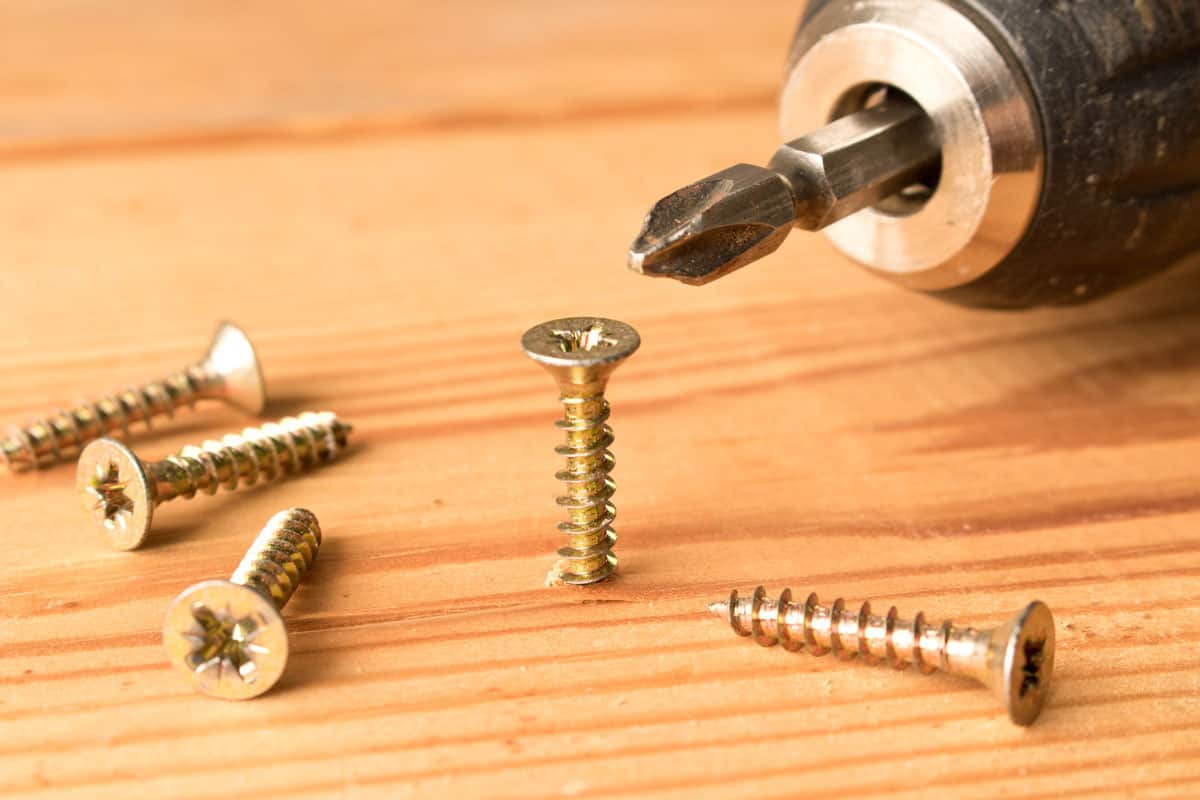
Screwing the subfloor may give a different result than what you are expecting. That's why it's important to know the things you should consider. Refer to the list below.
Types of Screw
Screws differ in what they're made of and where they're used. So, you should know what screws to use for the subfloor. See some types below.
Steel Screw
Steel screws are non-corrosive and can withstand rusting. These screws have grooves, which refer to the spiral running from the middle down to the tip.
Steel screws for decks usually have a sharp thread and a narrow point. Also, the head is flat and has a hole for screwing. The shank typically has no grooves to allow the plywood to be stable in place.
See this steel screws on Amazon.
Galvanized Screw
Galvanized screws are coated with zinc to maximize their resistance to moisture, rusting, and corrosion. These screws are thicker than steel screws. The extra layer of zinc acts as the primary protection so that it's the first thing to get damaged before actually affecting the metal.
Further, galvanized screws are ideal in outdoor spaces in which rainwater is common. So, using them for the subfloor can be suitable for high humidity levels during winter and rainy seasons.
See this galvanized screws set on Amazon.
Subfloor Screw Sizing
Use screws at least an inch longer than the subfloor's thickness. Longer screws are good, especially if the joist is thick. Compared to shorter screws, longer screws can hold the surfaces firmly.
You'll also want to consider screws with markings such as #8, #10, or #12. These markings indicate how long and how thick the screws are. You can specify to the manufacturer these markings, and they'll give you the right screws.
Difference Between Deck Screws and Floor Screws
As a quick comparison, floor screws are good for a wide variety of wooden floorings such as fiberboard, softwood, and hardwood. On the other hand, deck screws are commonly used in outdoor spaces. That's why deck screws are mostly made to resist corrosion.
Why Not Use Nails For Subfloor?
It's not that you cannot use nails. Screws, however, have a stronger hold due to the larger thread preventing the subfloor from shaking or wiggling. Also, nails could cause squeaking due to their flexibility; unlike screws that are hard to bend.
Can You Recycle Deck Screws?
Metallic materials, like screws, are recyclable. However, you should inspect if the quality is still good. To maintain durability, there should be no corrosion or rusting. You simply need a screwdriver to remove the screws in place.
What Are the Types of Subfloors?
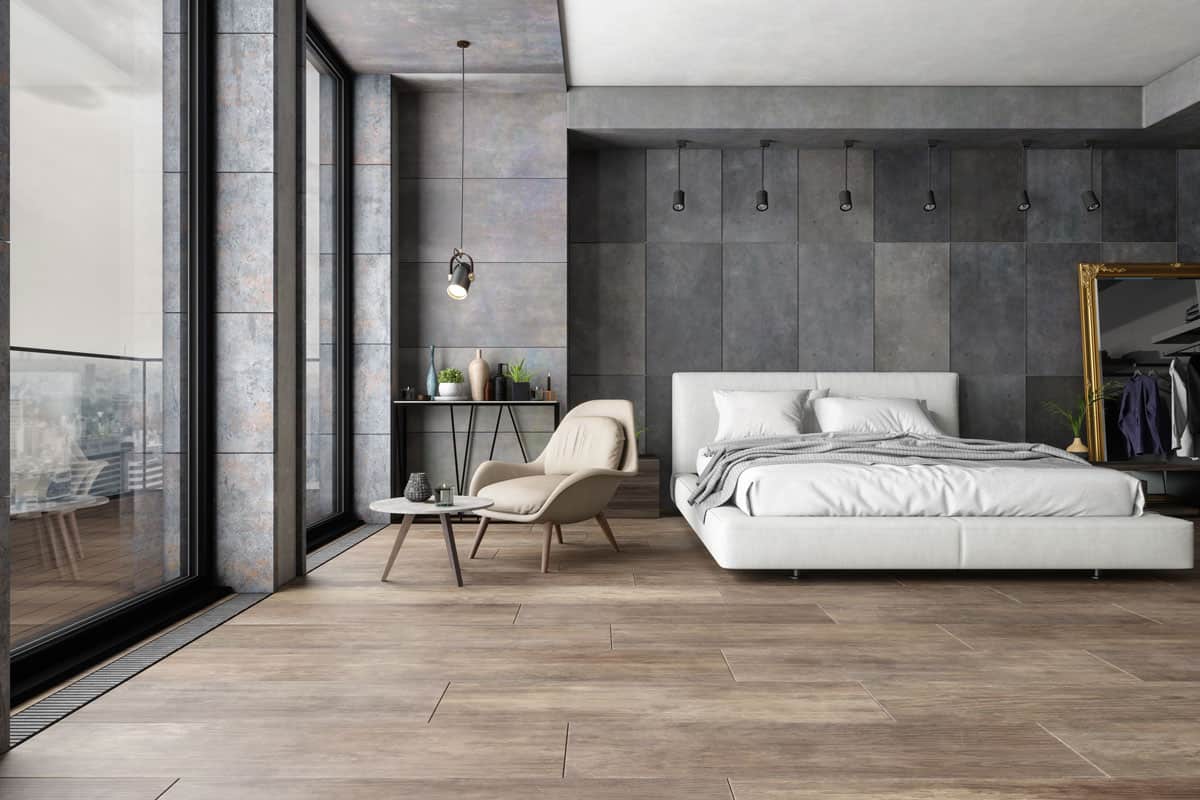
It's important to understand how subfloors differ from each other, as they also require different treatments depending on installation. Check below for some subfloor types.
Plywood
Plywood usually has two sides with the smooth one facing the ceiling while the rough one faces downward. Plywood is made by pressing together many layers of thin wood, resulting in a single layer of the strong wood sheet.
Oriented Strand Board
Known also as OSB, this subfloor is made by combining solid wood strands with pressure and heat. OSB is a lightweight, versatile, and durable material that can withstand sudden movements.
Concrete
A concrete subfloor uses slabs that provide a durable and smooth surface. However, a concrete subfloor requires an additional layer on top of it, such as tiles. This is to protect the concrete from deformation and moisture.
Laminated Wood
Laminated wood is usually made from combined wood pieces with binding chemicals and processed under high pressure and heat. The result is strong, scratch-resistant, and easy-to-clean wood pieces.
Some manufacturers have a premium quality of laminated wood that's as solid as hardwood or engineered wood. However, generic laminated wood is inexpensive compared to other subfloors.
How Thick Should the Subfloor Be?
Most experts suggest that the subfloor's thickness should be 15/32 inch (or approximately 2 centimeters), specifically if the underlying joists are 16 inches apart or less.
However, the thickness may vary based on the type of subfloor. It's good to ask your contractor for the recommended subfloor thickness
Do You Need to Insulate the Subfloor?
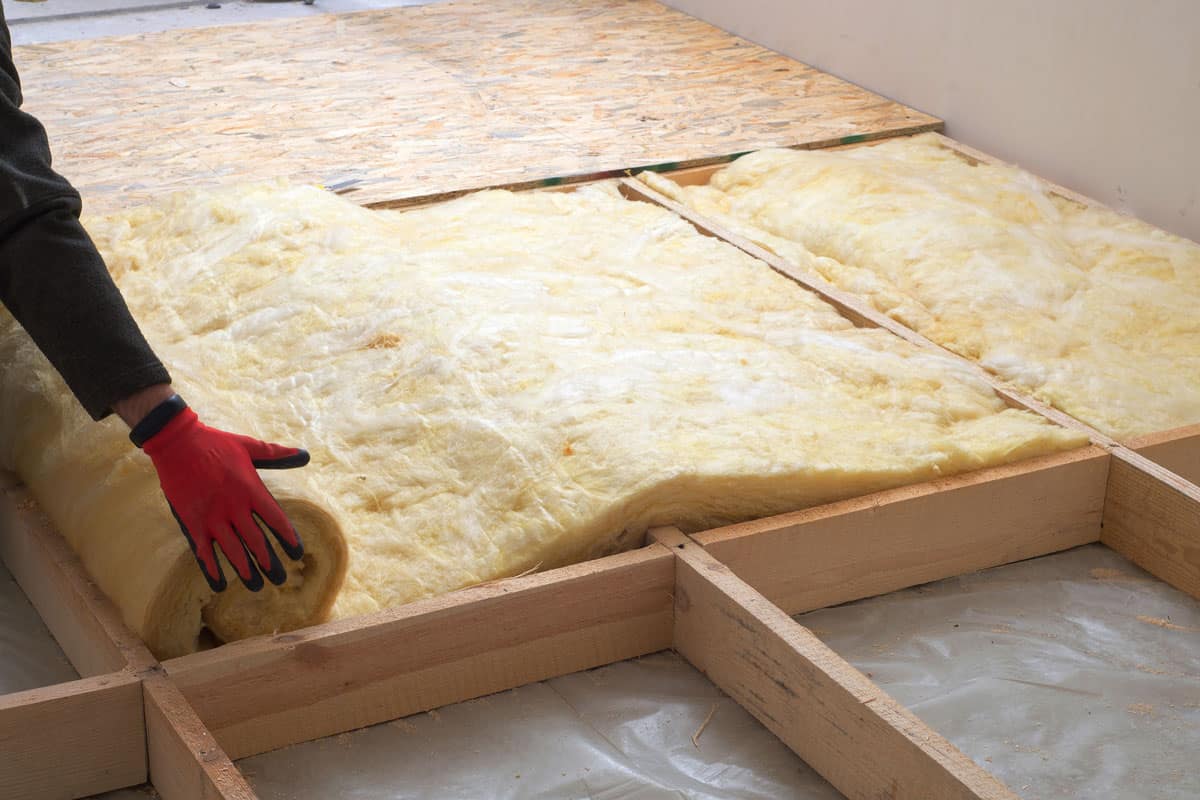
Insulation is a technique of trapping heat in high-humidity areas. Insulating the subfloor helps reduce moisture and improves the room temperature. To help you decide whether to insulate the subfloor or not, you can consider what insulation can accomplish.
Saves Energy
Heat loss is a problem, especially during winter. But with insulation, the floor can adjust the temperature and retain the heat in the area. As a result, you'll see energy consumption going down.
Eliminates Air Drafts
Air drafts are the sudden evaporation of air from the soil or any cool surface. Insulation can block such air drafts to minimize the moisture and humidity in the area.
Protects Pipelines from Freezing
Insulation also protects the pipelines from freezing. Since pipelines are usually beneath the floor, insulation can act as a barrier to limit the moisture buildup when the temperature is cold.
Subfloor Vs. Underlayment
The subfloor is a structural component of the house, whereas underlayment is merely an additional layer of moisture and heat protection. Basically, the subfloor suits on top of the joist, while the underlayment sits on top of the subfloor.
Both have different purposes, yet they're important in enhancing the durability and stability of the floor. However, underlayment is optional. You can use it to support the top layer, such as tiles.
What Underlayment to Use On a Wooden Subfloor?
Your best options are cork and foam underlayments. See the details below.
Cork Underlayment
Cork underlayment is a soft yet durable material that can absorb shock and insulate the floor.
See this cork underlayment roll on Amazon.
Foam Underlayment
On the other hand, foam underlayment is recyclable, eco-friendly, and moisture-resistant.
Any of the two is good to use, depending on your preference. However, you can follow the steps below on how to install foam underlayment:
- Ensure that the subfloor is clean and dry.
- Roll the underlayment onto the floor, and arrange it to cover the entire area.
- Peel the plastic to activate the adhesive. You should overlap the underlayment sheets a bit.
- Cut the excess to fit around the edges and corners.
- Proceed to install the laminate flooring depending on what flooring you prefer. Refer to the product instructions for property installation. Also, make sure the underlayment will not be visible.
Conclusion

We learned that deck screws are good to use for the subfloor. Remember to consider some factors such as screw type and size. You can also recycle some used deck screws to cut the cost. Just ensure that the screws are still in good condition.
Do you want more like this? Try to visit us here:
How To Remove Nails From Floorboards
What Flooring Goes With Butcher Block Countertops? [11 Ideas With Photos]




